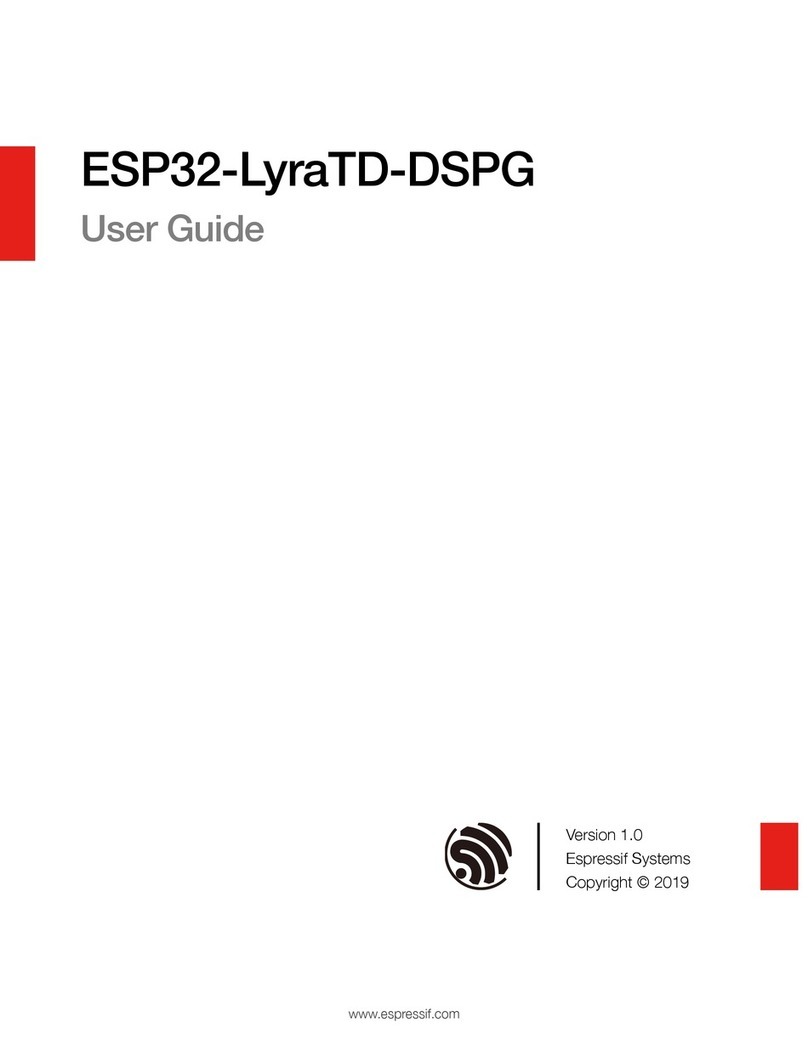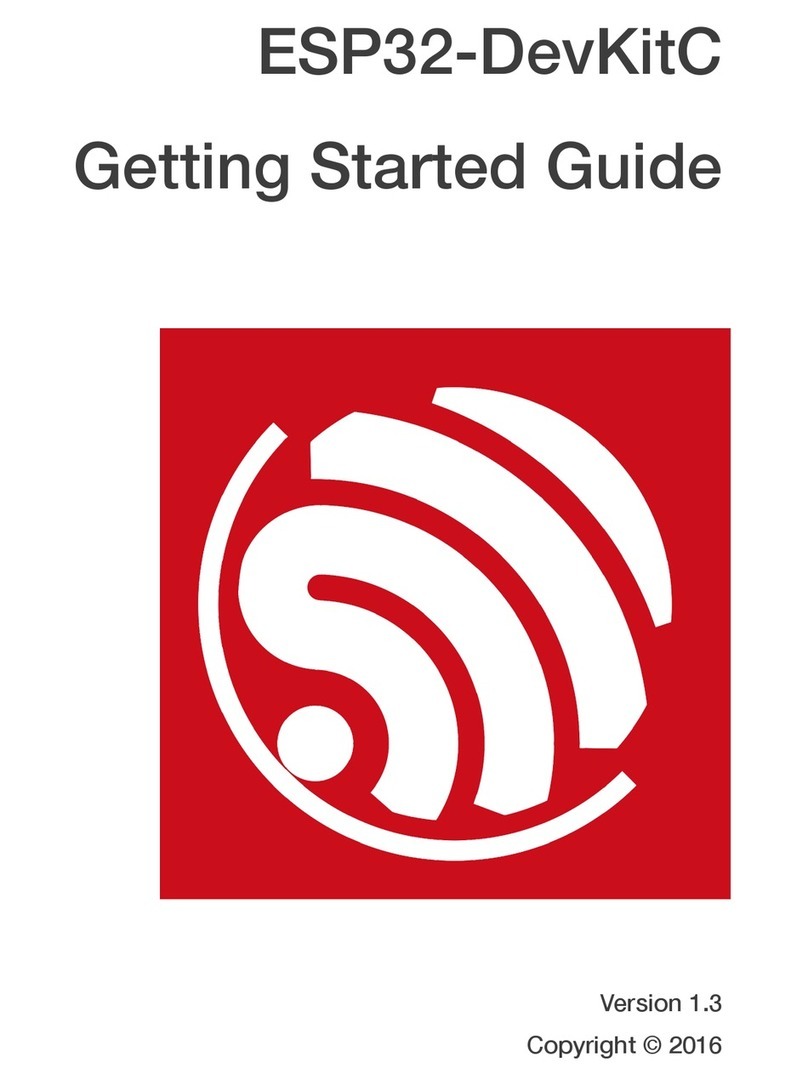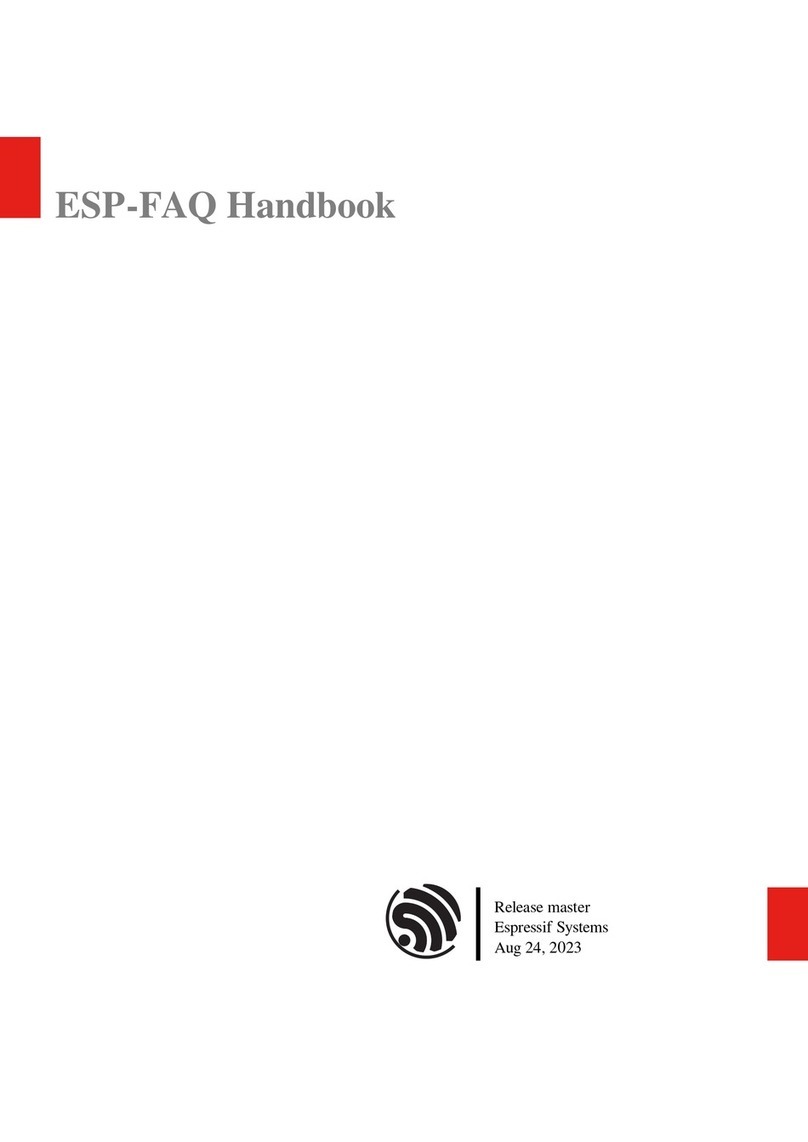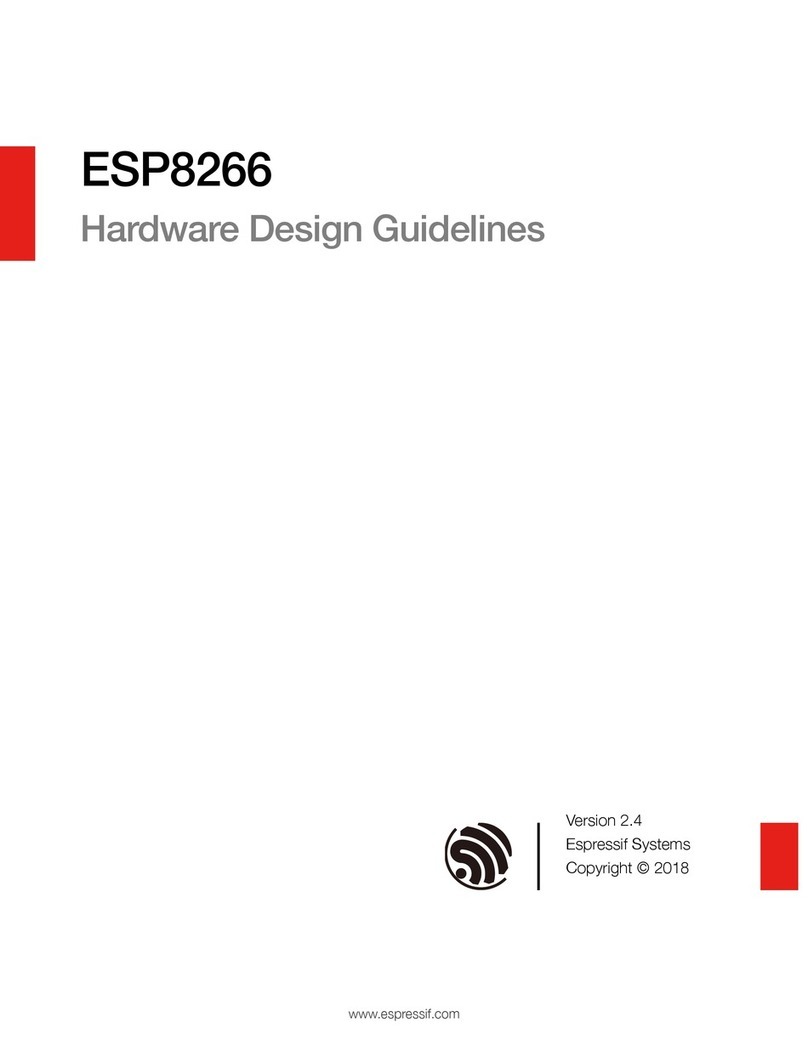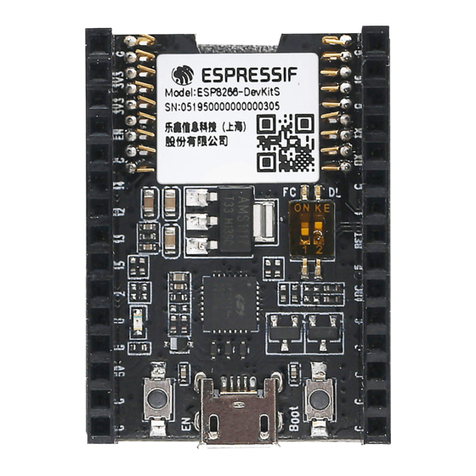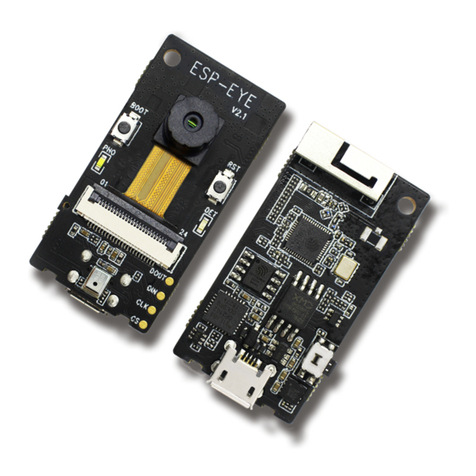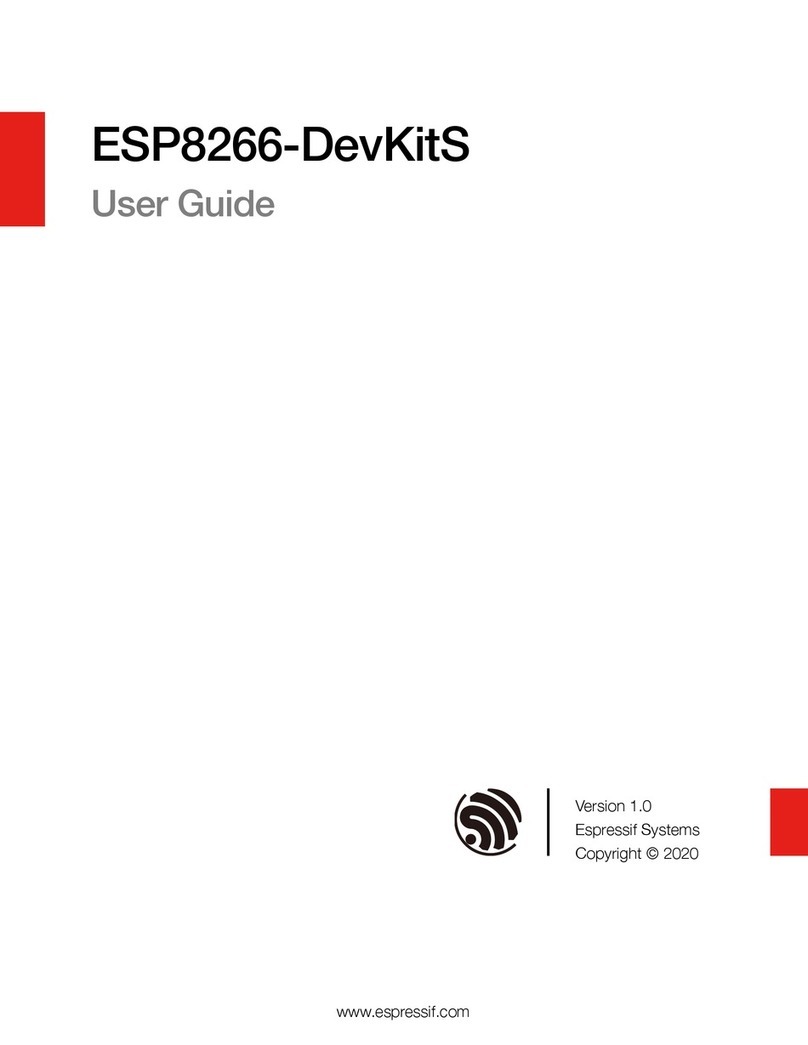3. CX20921 DSP
CX20921 is a dual core, far field voice input processor which supports Smart Source
Pickup(SSP) noise suppression and various functionalities such as voice control, voice
search, Voice over Internet Protocol (VOlP) and acoustic echo cancellation (AEC). This
audio DSP is used for wake-word detection. It captures audio data from two external
microphones.
4. CX20721 codec
CX20721 is an audio Coder-Decoder which has integrated AudioSmart Class-D with
2.8W per channel.
5. CP2102N USB-UART Chip
An upgraded version of the CP2102 chip supports USB-to-UART conversion.
6. USB Communication Port
This is a normal USB communication port between PC and ESP32 module.
7. ON-Board microphone
There are two types of microphone connection, on-board and by MIC-IN connector.
8. MIC-IN microphone connector
Supports two external microphones.
9. FPC connector
This connection is reserved for connecting external sub board consisting of more
devices, such as microphone array, buttons and LEDs etc.
10. Earphone jack
Used for plugging in earphones. Audio output is via codec.
11. Speaker output port
Supports two external speakers output via codec.
12. Button
The six buttons figure different functions, such as RST, BOOT, PLAY, VOL+/-, MUTE etc.
